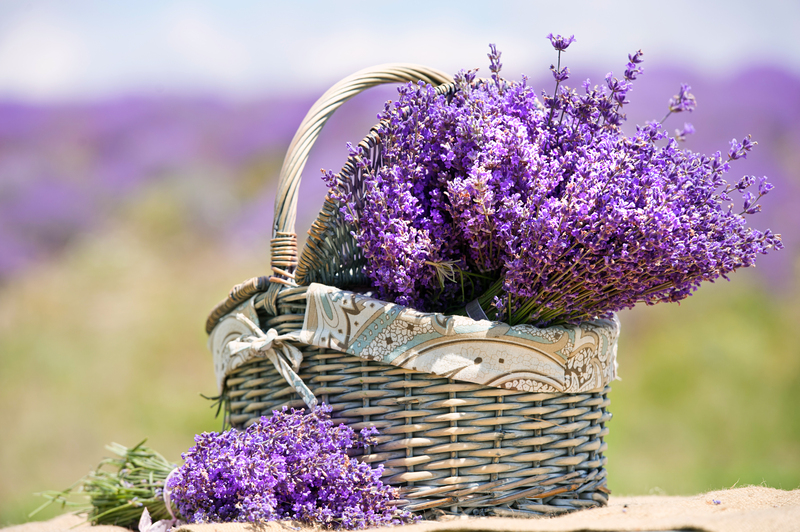The Ultimate Craft of Caring for Orchids
Posted on 31/05/2025
The Ultimate Craft of Caring for Orchids
Orchids have captivated people for centuries with their exquisite beauty and stunning diversity. Whether you're a novice gardener or a seasoned plant enthusiast, mastering the art of orchid care brings joy and a rewarding sense of achievement. In this comprehensive guide, we'll reveal expert techniques for raising healthy orchids, common mistakes to avoid, and helpful tips to foster thriving blooms year-round.
Why Cultivate Orchids? The Magic Behind These Elegant Plants
With over 25,000 species and countless hybrids, orchids are one of the largest and most varied families in the plant kingdom. Their intricate blooms often last for several months, adding a touch of sophistication and natural beauty to any environment. By learning how to care for orchids at home, you can enjoy:
- Long-lasting flowers that add vibrant color to your space
- Unique plant varieties for every skill level, from beginners to experts
- Air-purifying qualities that help improve indoor air
- Therapeutic and calming experiences from nurturing delicate life

Understanding Your Orchid: Varieties and Their Specific Needs
Before diving into orchid care techniques, it is essential to identify the type of orchid you have. Different varieties require unique approaches to watering, light, and feeding. Here are some of the most popular types you may encounter:
Phalaenopsis (Moth Orchids)
- The most common orchid for beginners.
- Flowers can last up to three months.
- Prefers indirect sunlight and stable, warm temperatures.
Dendrobium Orchids
- Showy and easy to find in stores.
- Likes bright, filtered light and moderate watering.
- Blooms last several weeks.
Cattleya Orchids
- Famous for vibrant, frilled blooms.
- Require more light than Phalaenopsis or Dendrobium.
- Often used as corsage flowers.
Oncidium Orchids
- Also known as "Dancing Lady" orchids.
- Need bright light and good air movement.
- Blooms appear in large sprays.
Mastering Orchid Care: Fundamental Requirements
To craft the ideal environment for flourishing orchids, attention to key growth factors is essential. Below, we cover the most important elements of successful orchid care.
1. Light: Shedding Light on Orchid Success
- Most orchids prefer bright, indirect sunlight.
- Phalaenopsis thrives in east or west windows, protected by sheer curtains.
- Cattleyas and Oncidiums may need more light; consider a south-facing window, but avoid scorching midday rays.
- Yellowing leaves can indicate too much light, while dark green leaves signal too little.
2. Watering: The Delicate Balance
- Overwatering is the number one killer of orchids.
- Water once a week during growth; less in winter.
- Use tepid water and allow it to drain completely--never let roots sit in water.
- Roots should appear plump and white or green when healthy.
3. Humidity: Embracing the Tropics at Home
- Orchids thrive in 40-70% humidity.
- Use a humidity tray, room humidifier, or group plants together.
- Mist leaves early in the day if your home is particularly dry.
4. Air Circulation: Letting Orchids Breathe
- A stagnant atmosphere encourages pests and disease.
- Ensure gentle air movement with a fan (do not blow directly on plants).
- Open windows occasionally, weather permitting.
5. Potting Media and Repotting: Supporting Healthy Roots
- Use a special orchid mix--never standard potting soil.
- Common ingredients include bark, perlite, and sphagnum moss.
- Repot every 1-2 years to refresh the media and inspect roots.
- Signs you need to repot: Media breaks down, roots outgrow the pot, or water no longer drains easily.
Feeding Your Orchid: Fertilizer Tips
Orchids are not heavy feeders, but regular fertilizing ensures robust growth and prolific blooms. For best results:
- Choose a balanced, water-soluble fertilizer (such as 20-20-20).
- Dilute to half or quarter strength.
- Apply every 2-4 weeks during active growth.
- Reduce or withhold fertilizer during dormancy or winter months.
- Flush pots monthly with plain water to prevent salt buildup.
Orchid Blooming: Coaxing Your Plant to Flower
Many orchid lovers wonder how to encourage orchids to bloom again after the flowers fade. Patience and proper care are key. Set your orchid up for blooming success by:
- Ensuring sufficient light (blooms won't form without it!).
- Offering a slight temperature drop (10?F/5?C) at night for a few weeks, especially for Phalaenopsis.
- Cutting old flower spikes just above a node to stimulate a new shoot.
- Continuing consistent care; avoid drastic changes in environment.
Common Orchid Pests and Problems: Prevention & Solutions
Dealing with Pests
- Mealybugs - White, cottony blobs along stems and leaves. Remove with alcohol-dipped cotton swabs.
- Scale - Small, brown bumps on leaves. Scrape off and use horticultural oil.
- Aphids and spider mites - Rinse with water and apply insecticidal soap as necessary.
Other Common Issues
- Bud Blast: If buds fall off without opening, check for cold drafts, dehydration, or sudden changes in light.
- Yellowing Leaves: Overwatering, lack of nutrients, or old age. Remove yellow leaves and adjust care routines.
- Root Rot: Usually caused by excessive water and poor drainage. Repot and trim away soft, blackened roots.
Crafting Your Orchid Display: Styling and Placement Tips
Orchids are as much a part of home decor as they are a horticultural hobby. Consider these display ideas to showcase your orchid collection:
- Grouping: Assemble several orchids in different colors and shapes for a "living bouquet."
- Containers: Choose transparent pots to monitor root health, or place decorative cachepots around plastic sleeves.
- Orchid Terrariums: Miniature orchids do well in humid glass enclosures. Add pebbles and driftwood for decor.
- Mounted Orchids: Attach epiphytic orchids to wood mounts to mimic their native habitats. Mist regularly!
Advanced Orchid Care: For the Enthusiast
If you're ready to dive deeper into the craft of orchid care, try these advanced techniques:
Propagation
- Divide mature orchids when repotting--ensure each section has healthy roots and pseudobulbs.
- Some orchids, like Phalaenopsis, produce "keikis" (baby plants) on flower spikes. Pot them up when roots form.
Pollination
- Hand-pollinating orchids is possible with a fine brush--great for orchid breeders!
Hybridization
- Create your own orchid hybrids from seed. Note: This is a long process and best for the passionate hobbyist.

Frequently Asked Questions: Orchids in Focus
How often should I water my orchid?
Watering depends on the type, container, and environment. As a rule, water once a week and ensure the roots never sit in water. Monitor roots for health cues.
Why aren't my orchids blooming?
Insufficient light is the most common reason. Also, ensure proper fertilizing and try a nighttime temperature drop to encourage flowering.
Can I grow orchids outdoors?
Yes, but only in mild, frost-free climates. Try hanging baskets in shaded patios or protected areas during warm months.
What's the best time to repot an orchid?
Just after blooming, or if the potting media breaks down and drainage suffers. Repot every 1-2 years for optimal root health.
Conclusion: The Enduring Joy of Orchid Cultivation
Mastering the ultimate craft of orchid care is both a science and an art. By tailoring your approach to your orchid's unique needs and maintaining diligent, attentive care, you'll enjoy healthy, robust plants that gift you with breathtaking blooms for years to come. Remember--patience, observation, and gentle hands are the best tools an orchid grower can possess.
Ready to get started? Select a variety that suits your lifestyle, follow the comprehensive orchid care instructions above, and watch your passion for these extraordinary plants grow and flourish.
If you found this guide helpful, share your orchid success stories or ask questions in the comments below--let's keep our orchid community growing!

